CO2GLE
2014, browser-based installation
CO2GLE is a real-time, net-based installation that displays the amount of CO2 emitted each second thanks to global visits to Google.com. What is the material impact of communications through the Internet? I often ask this question of my friends and colleagues, and I rarely get a reply. Indeed, almost nobody recalls that the Internet is made up of interconnected physical infrastructure which consume natural resources. How can such an evident fact become so blurred in the social imagination? This project was created from an urge to highlight the massive environmental impact of digital communications technologies. Forty percent of the Internet’s total carbon footprint may be attributed to the design of a web site. In 2008 the Internet was already responsible for 2% of CO2 of global emissions, more than that of the aviation industry and the amount of data produced ever since has increased at a whooping pace. On average, the production of 1 kWh emits 544 gr. of CO2. It takes 13 kWh to transmit 1GB of information, the equivalent of 7,07 kg. of CO2.
Due to the complex set of actors involved in the configuration and operation of the Internet, it is impossible to determine the exact amount of its CO2 emissions, so the data I present here is approximate. Therefore, CO2GLE acts as a symbolic agent which seeks to reveal the link between our actions and their material impact on the physical world, and aims at creating a mechanism that may trigger thoughts and actions that stimulate and re-appropriate subjectivity. I believe that this is an essential process in the generation of critical thought about the true nature of technology, and in the imagination of alternative techno-paradigms which may coherently respond to our environmental and human conditions.
janavirgin.com


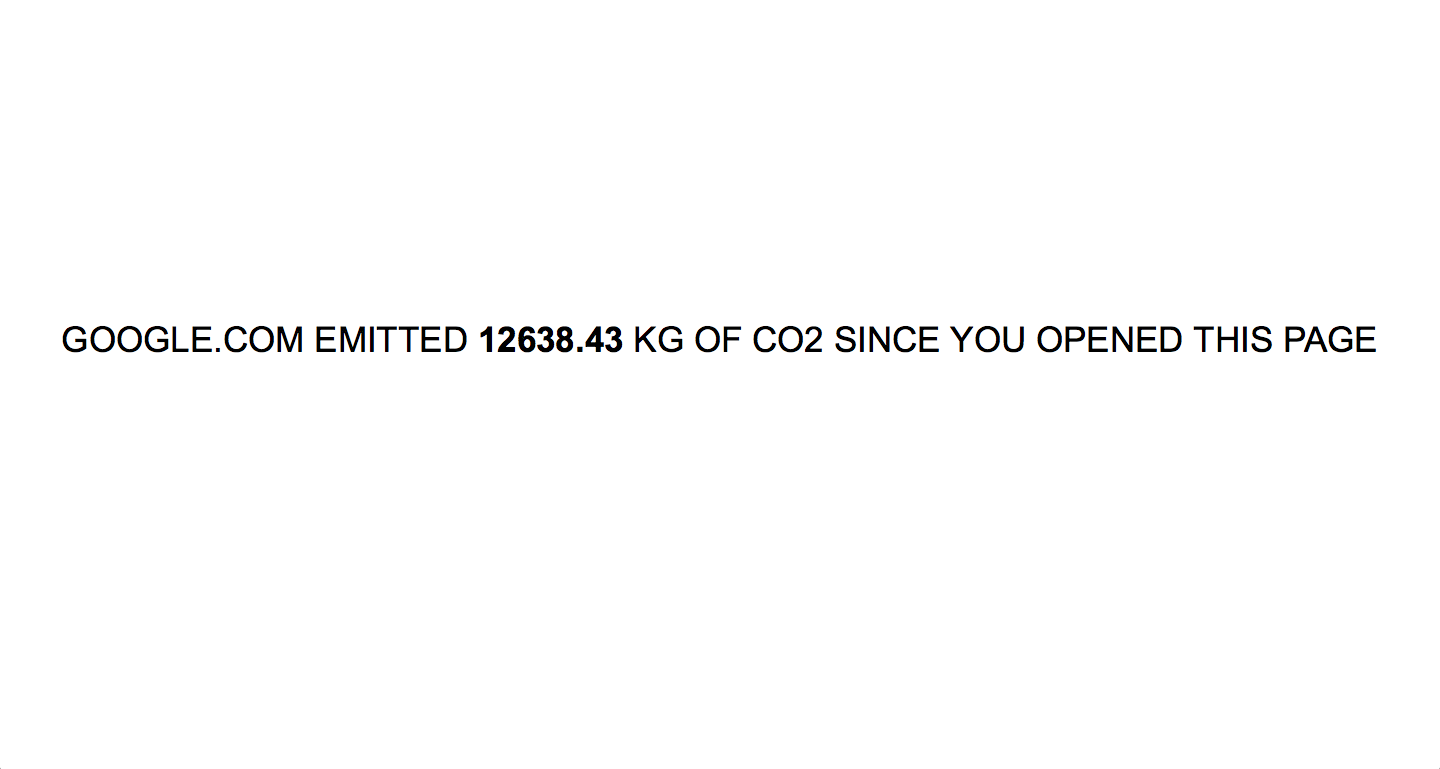
Džoana Molla (ES / DE)
CO2GLE
2014, pārlūkprogrammā balstīta instalācija
CO2GLE ir tiešsaistes interneta instalācija, kurā parādīts ogļskābās gāzes daudzums, kas ik sekundi saražots vietnes Google.com apmeklējumu dēļ. Kāda ir interneta saziņas materiālā ietekme? Šo jautājumu es bieži uzdodu draugiem un kolēģiem, tomēr reti gūstu atbildi. Turklāt teju neviens neatminas, ka internetu nodrošina fiziska infrastruktūra, kas patērē dabas resursus. Kā gan tik acīmredzams fakts var sabiedriskajā iztēlē būt tik aizmiglots? Šis darbs tapis centienos izgaismot to, cik būtisku ietekmi digitālās komunikāciju tehnoloģijas atstāj uz vidi. 40% interneta radītās oglekļa dioksīda pēdas saistāmi ar mājaslapu dizainu. Jau 2008. gadā interneta radīto oglekļa dioksīda emisiju apjoms sasniedzis 2% no kopējā: tas ir vairāk nekā aviācijas industrijas radītais, turklāt saražoto datu apjoms kopš šī laika ir ievērojami pieaudzis. 1 kWh saražošanas laikā gaisā nonāk vidēji 544 g oglekļa dioksīda. Lai nosūtītu 1 GB informācijas, nepieciešami 13 kWh, kas līdzvērtīgi 7,07 kg oglekļa dioksīda.
Interneta darbības un konfigurācijas nodrošināšanā iesaistīto pušu tīkls ir komplicēts, un precīzu CO2 izmešu daudzumu noteikt ir neiespējami, tādējādi darbā uzrādītie dati ir tikai aptuveni. Līdz ar to CO2GLE darbojas kā simbolisks rīks, kas savieno mūsu darbības un to materiālo ietekmi fiziskajā pasaulē, kā arī tiecas raisīt pārdomas un veicināt rīcību, stimulējot un (no jauna) pielietojot subjektivitāti. Es uzskatu, ka šis process ir būtisks kritiskās domas veicināšanā par tehnoloģiju patieso dabu, kā arī alternatīvu tehno-paradigmu izveidē, kas sasauktos ar vides un cilvēku nosacījumiem.
janavirgin.com


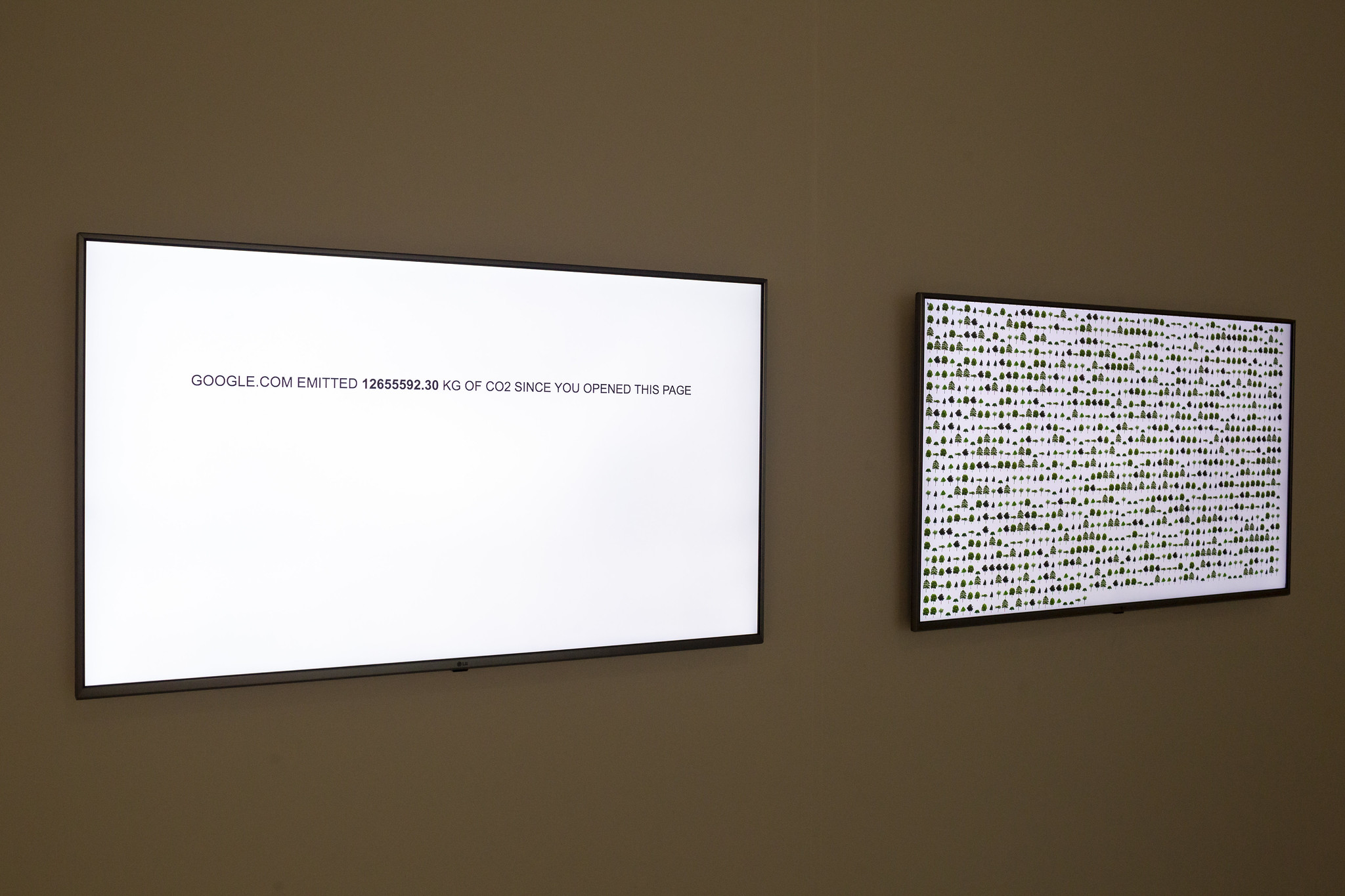
CO2GLE. Joana Moll. Photo: Didzis Grodzs
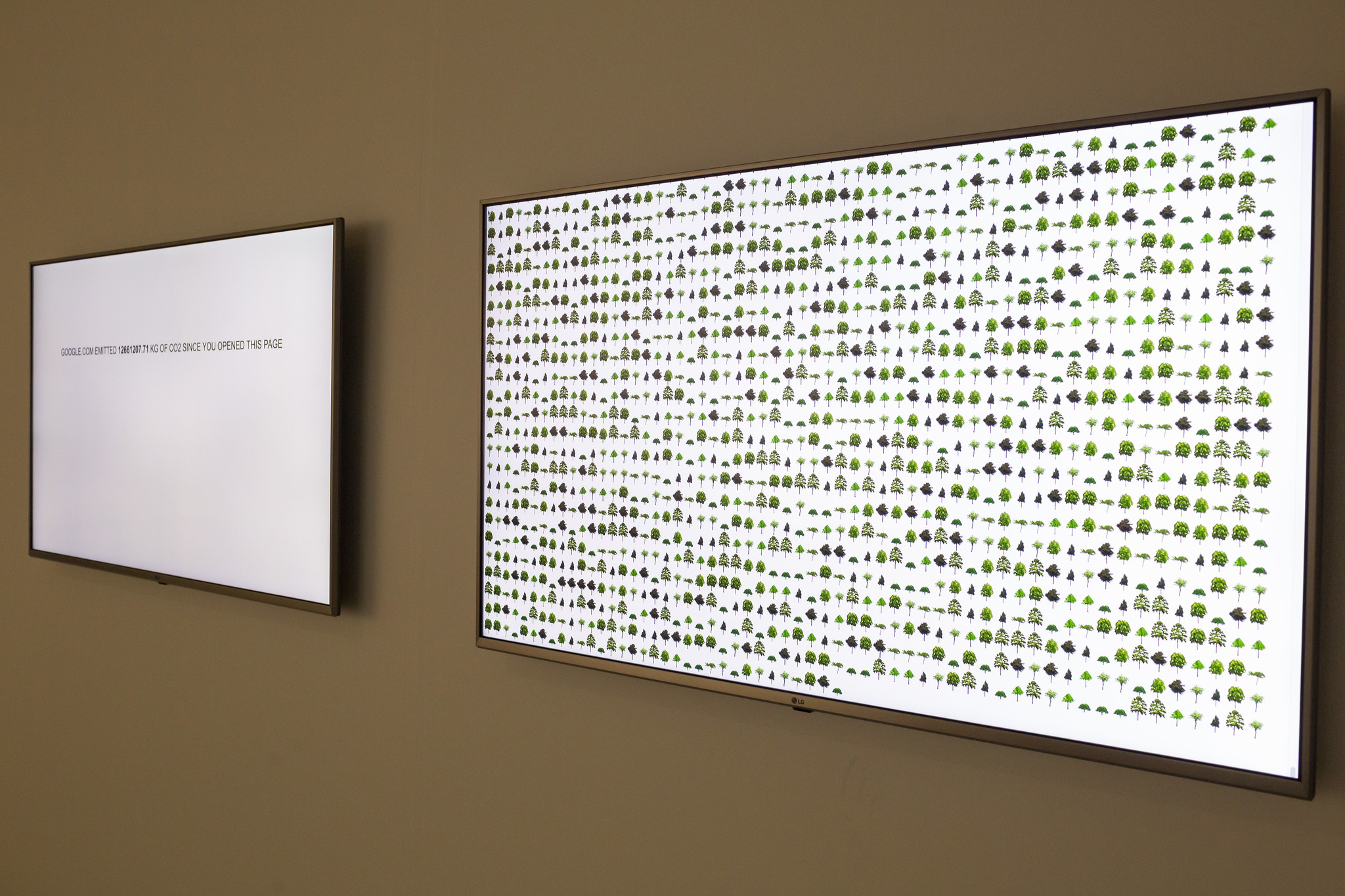
CO2GLE. Joana Moll. Photo: Didzis Grodzs
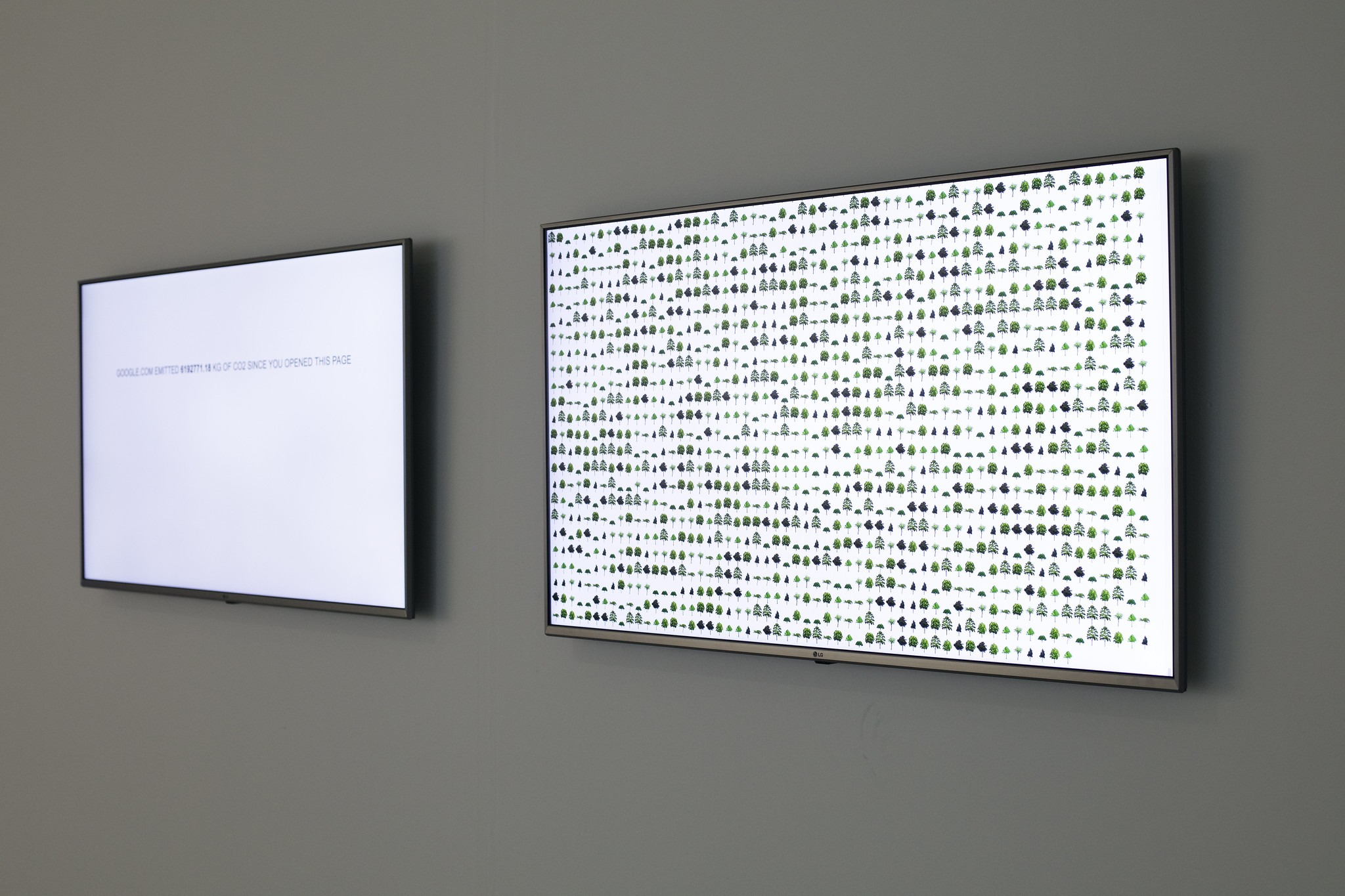
CO2GLE. Joana Moll. Photo: Kristine Madjare
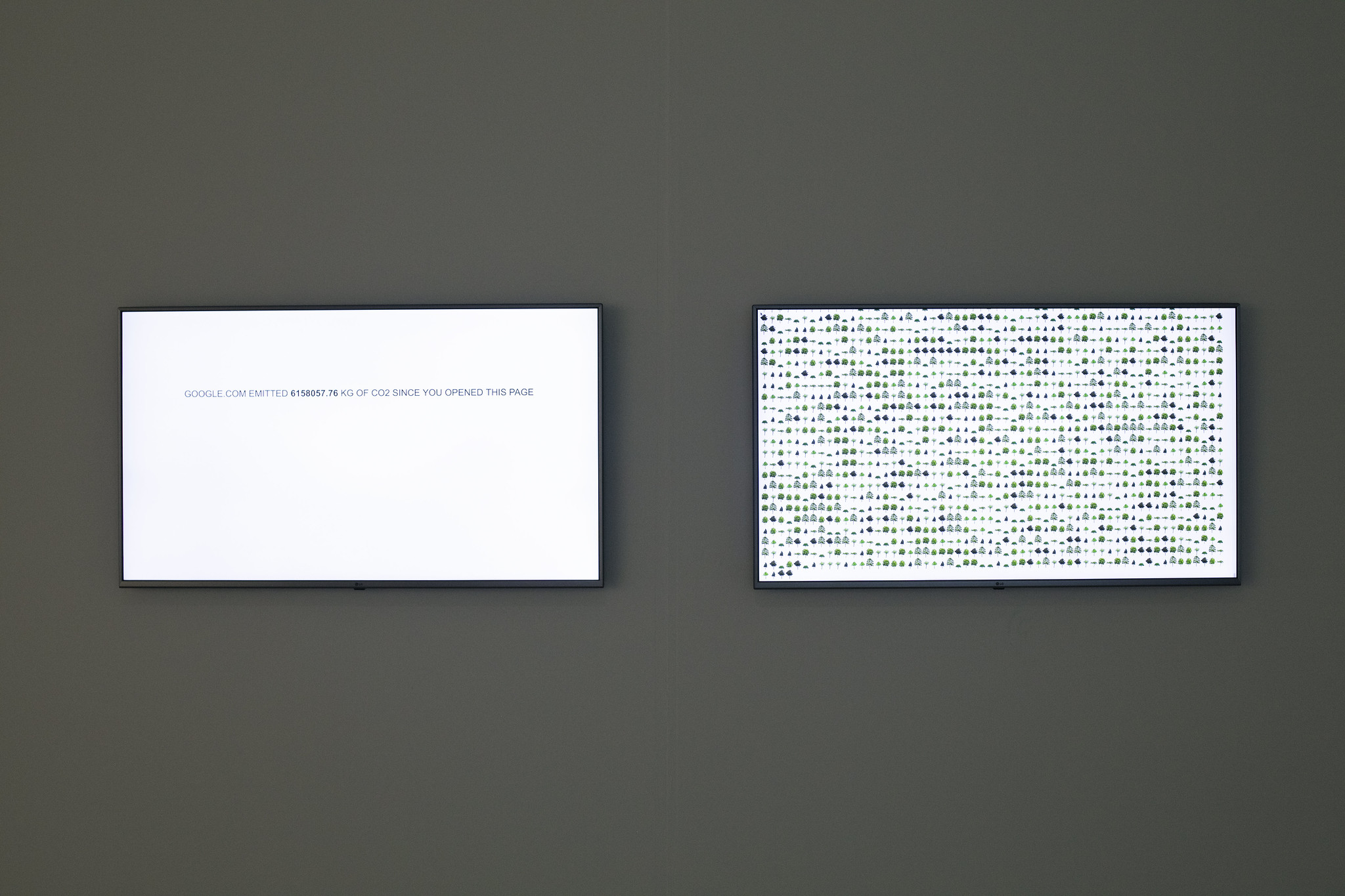
CO2GLE. Joana Moll. Photo: Kristine Madjare